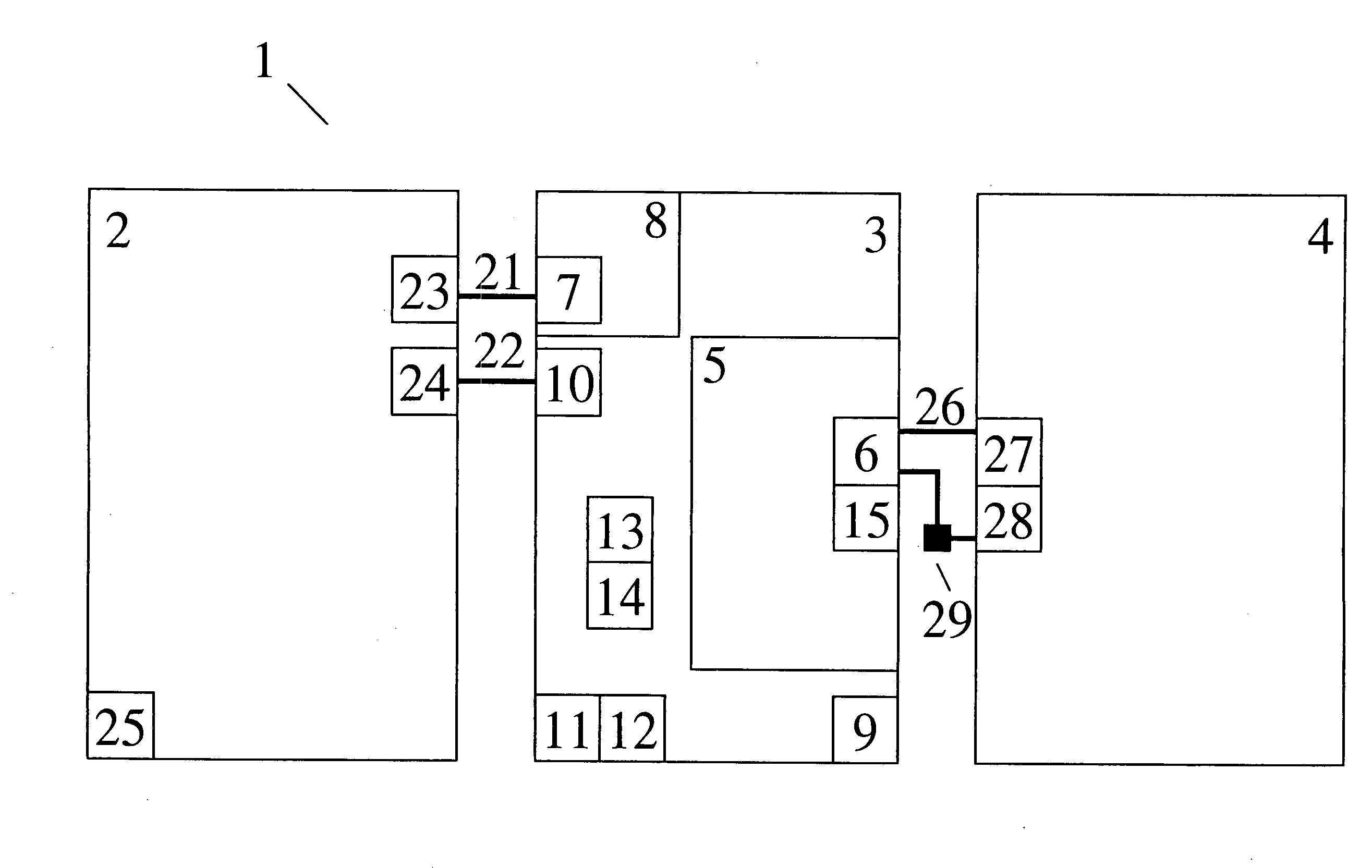Computer system for aircraft
a computer system and aircraft technology, applied in the field of aircraft cockpit computer systems, can solve the problems of inability to support pilots using charts stored on laptops, complicated and time-consuming exchange of fixed computer systems, and high cost of installing a computer system in the cockpit, so as to simplify the maintenance process of the main hardware and software of the computer system, and minimize the time of the aircraft on the ground. , the effect of simplifying the retrofitting process
- Summary
- Abstract
- Description
- Claims
- Application Information
AI Technical Summary
Benefits of technology
Problems solved by technology
Method used
Image
Examples
Embodiment Construction
[0029]FIG. 1 shows a computer system 1 according to the invention. The computer system 1 comprises a screen 2, a docking unit 3 and a portable computer 4.
[0030] The screen 2 and the docking unit 3 are connected with appropriate means in order to enable the docking unit 3 to provide the screen 2 with the data to be displayed. In the present example, this means is a VGA cable 21. This VGA cable 21 is connected to the graphical processor 8 in the docking unit 3 via the screen connection 7. According to an alternative embodiment, a LVDS connection may be used. In addition, the screen 2 and the docking unit 3 may be connected via a further cable 22. This may be the case if the screen 2 comprises input keys, like line select keys or is constituted as touch screen. This input cable is connected to the input connection 10 of the docking unit 3 to provide the docking unit with the corresponding data. In the example shown in FIG. 1, the screen 2 comprises a connection 23 for receiving displa...
PUM
 Login to View More
Login to View More Abstract
Description
Claims
Application Information
 Login to View More
Login to View More - R&D
- Intellectual Property
- Life Sciences
- Materials
- Tech Scout
- Unparalleled Data Quality
- Higher Quality Content
- 60% Fewer Hallucinations
Browse by: Latest US Patents, China's latest patents, Technical Efficacy Thesaurus, Application Domain, Technology Topic, Popular Technical Reports.
© 2025 PatSnap. All rights reserved.Legal|Privacy policy|Modern Slavery Act Transparency Statement|Sitemap|About US| Contact US: help@patsnap.com



